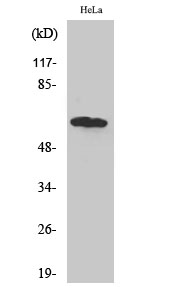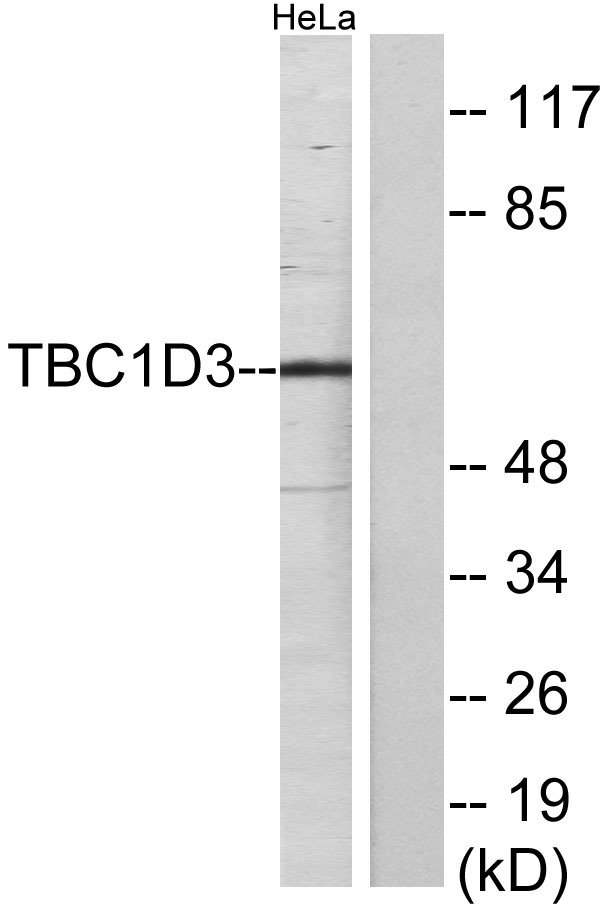TBC1D3A/B/C Polyclonal Antibody
- 货号:YT4559
- 应用:WB;IF;ELISA
- 种属:Human
- 蛋白名称:
- TBC1 domain family member 3
- 免疫原:
- The antiserum was produced against synthesized peptide derived from human TBC1D3. AA range:481-530
- 特异性:
- TBC1D3A/B/C Polyclonal Antibody detects endogenous levels of TBC1D3A/B/C protein.
- 组成:
- Liquid in PBS containing 50% glycerol, 0.5% BSA and 0.02% sodium azide.
- 来源:
- Polyclonal, Rabbit,IgG
- 稀释:
- WB 1:500 - 1:2000. ELISA: 1:20000.. IF 1:50-200
- 纯化工艺:
- The antibody was affinity-purified from rabbit antiserum by affinity-chromatography using epitope-specific immunogen.
- 储存:
- -15°C to -25°C/1 year(Do not lower than -25°C)
- 其他名称:
- TBC1D3;PRC17;TBC1D3A;TBC1 domain family member 3;Prostate cancer gene 17 protein;Protein TRE17-alpha;Rab GTPase-activating protein PRC17;TBC1D3B;TBC1D3I;TBC1 domain family member 3B;TBC1D3C;TBC1D3D;TBC1 domain family member 3C
- 背景:
- This gene represents one of a cluster of related genes found on chromosome 17. The proteins encoded by this gene family contain a TBC (Tre-2, Bub2p, and Cdc16p) domain and may be involved in GTPase signaling and vesicle trafficking. [provided by RefSeq, Apr 2014],
- 功能:
- disease:May be involved in forms of prostate cancers.,function:Acts as a GTPase activating protein for RAB5. Does not act on RAB4 or RAB11.,similarity:Contains 1 Rab-GAP TBC domain.,tissue specificity:Expressed in liver, skeletal muscle, kidney, pancreas, spleen, testis, ovary, small intestine and peripheral blood leukocytes. Overexpressed in prostate cancers.,tissue specificity:Expressed in pancreas, thymus and testis.,
- 细胞定位:
- Cell membrane ; Lipid-anchor . Associated with lipid rafts.
- 组织表达:
- Expressed in liver, skeletal muscle, kidney, pancreas, spleen, testis, ovary, small intestine and peripheral blood leukocytes. Overexpressed in prostate cancers.

- Western Blot analysis of various cells using TBC1D3A/B/C Polyclonal Antibody

- Western blot analysis of lysates from HeLa cells, using TBC1D3 Antibody. The lane on the right is blocked with the synthesized peptide.




